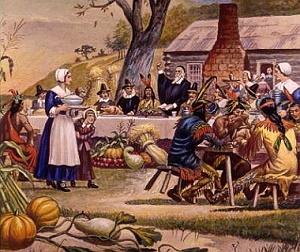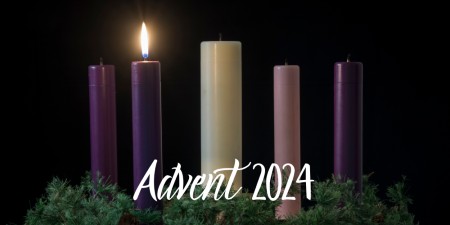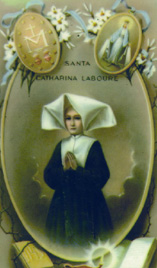We ask you, urgently: don’t scroll past this
Dear readers, Catholic Online was de-platformed by Shopify for our pro-life beliefs. They shut down our Catholic Online, Catholic Online School, Prayer Candles, and Catholic Online Learning Resources—essential faith tools serving over 1.4 million students and millions of families worldwide. Our founders, now in their 70's, just gave their entire life savings to protect this mission. But fewer than 2% of readers donate. If everyone gave just $5, the cost of a coffee, we could rebuild stronger and keep Catholic education free for all. Stand with us in faith. Thank you.Help Now >
Wherein lie the differences? Catholic v. Eastern Orthadox
FREE Catholic Classes
With the Eastern Orthodox wrapping up their "pan-Orthodox Council" this past weekend, it might be a good time to take a look at the factors that separate Catholics from their sister Churches in the east.
Highlights
Catholic Online (https://www.catholic.org)
7/1/2016 (8 years ago)
Published in Living Faith
Keywords: Catholic, Eastern Orthodox, disagreement, Bishop of Rome, Trinitarian teaching
Vatican City, Italy (CNA/EWTN News) - The main issues of disagreement are the primacy of the Bishop of Rome and elements of Trinitarian teaching, although conflict also exists over the Immaculate Conception, purgatory and other doctrines.
For 1,000 years after Christ, the Churches of east and west were in communion with one another, holding seven ecumenical councils between 325 and 787 to define Christian belief.
But throughout this time, the cultures of the Latin-speaking west and Greek-speaking east grew more and more estranged, and there was increasing distrust and hostility between them. Occasional schisms occurred but were healed - such as the Acacian schism of the late fifth century and the Photian schism of the 860s.
Primacy of the Bishop of Rome
But after 1009, the Bishop of Rome did not appear in the diptychs - the list of bishops in communion with the local Church - of Constantinople. And in 1054, a papal delegation to the Patriarch of Constantinople excommunicated the patriarch and were in turn excommunicated by him. Though this schism was as much an issue of personal animosity and misunderstanding as anything else, the schism was never healed, as the earlier schisms had been.
At least as important as the Schism of 1054 was the Sack of Constantinople in 1204. Crusaders from the West, who were supposed to have continued on to Jerusalem to release it from Muslim control, instead spent three days looting and vandalizing the capital of the Byzantine Empire. The sack cemented eastern distrust of and resentment toward the west, preventing any healing of the schism.
The foremost theological-ecclesiological division between Eastern Orthodoxy and Catholicism is the role of the Bishop of Rome, or the Pope. In the west, Church unity was expressed through being in communion with the Bishop of Rome, as the successor of St. Peter. Petrine primary among the apostles was a cornerstone in the west, whereas the east regarded St. Peter and his successors as Bishop of Rome as "first among equals."
Papal primacy was defined for the Catholic Church at the First Vatican Council, held in 1870. That council, held to be ecumenical by Catholics, taught that the Bishop of Rome has immediate and direct jurisdiction over the whole Church, and that when he speaks ex cathedra he possesses infallibility.
The Eastern Orthodox, on the other hand, have a conciliar model of the Church. For them, unity is through the common faith and communion in the sacraments, rather than a centralized authority. They do not recognize the authority of the Bishop of Rome over all Christians, but rather consider him equal to other bishops, though with a primacy of honor.
Eastern Orthodoxy favors various forms of conciliarism: classically, this was found in "pentarchy", the sense of five patriarchates: those of Rome, Constantinople, Alexandria, Antioch, and Jerusalem. Pentarchy has been challenged, however, by the rise of new patriarchates outside the classical Christian world, and their challenges to the historical patriarchates.
Constantinople came to regard itself as a "Second Rome" after the fall of the Roman Empire in the west, but after the city's fall to the Ottomans in 1453, Moscow came to see itself as a "Third Rome." The theory is attributed to the Russian abbot Philotheus of Pskov, who included it in a letter written in 1510. It was bolstered by Russian Orthodox claims that the Patriarchate of Constantinople had fallen into heresy by accepting the Council of Florence in the fifteenth century, and (albeit briefly) coming into union with the Bishop of Rome.
Conciliarism is known in Russian Orthodoxy as sobornost, a term which denotes the Church as a community of individual diversity in free unity.
Father Sergei Bulgakov, a Russian Orthodox priest, wrote in his 1935 work The Orthodox Church that "integral unity" for the Church "may be realized only in two ways: by Orthodox conciliarity, 'sobornost,' or by the authoritarian monarchy of Catholicism."
The Filioque
Next to the issue of papal primacy, an obstacle to reunion between the Catholics and Eastern Orthodox is the filioque - "and the Son", which was added to the text of the Niceno-Constantinopolitan Creed in the west to describe the procession of the Holy Spirit.
The text of the creed was agreed upon at the First Council of Nicaea and the First Council of Constantinople in 325 and 381 respectively, saying that the Holy Spirit proceeds from the Father. But the Catholic Church in Spain added to the creed in the sixth century, to say that that the Holy Spirit proceeds from the Father and the Son, as a way to combat latent Arianism.
The addition of the filioque was slowly adopted throughout the west, but was seen in the east as an innovation that was unnecessary at best, and heretical at worst. According to Metropolitan Kallistos Ware, some Eastern Orthodox believe that the filioque is not heretical in itself, provided it is properly explained and understood, but that it is nonetheless an unauthorized addition to the creed.
The Pontifical Council for Promoting Christian Unity has stated that the doctrine of the filioque "cannot appear to contradict the Monarchy of the Father" nor the Father's role as the sole origin of the Spirit.
And the North American Orthodox-Catholic Theological Consultation in 2003 was able to sign an agreement stating that the filioque need not be a Church-dividing issue. Moreover, Catholics do not always say the filioque in the creed: whenever it is recited in the Greek language, the original text is used, and Eastern Catholic Churches do not now recite it, seeing its use as a latinization.
Indissolubility of Marriage
Of particular importance recently, the Eastern Orthodox and Catholics also disagree about the indissolubility of marriage. The Catholic Church believes that a sacramental marriage that has been consummated can be dissolved only by death, whereas while the Eastern Orthodox recognize indissolubility as a characteristic of marriage and an ideal at which to aim, they generally accept that divorce-and-remarriage can occur.
Eastern Orthodox acceptance of divorce is linked to the historical subordination of the Church to the emperor in the Byzantine Empire, according to Archbishop Cyril Vasil'[s], secretary of the Congregation for the Oriental Churches. It was the emperor Justinian II who reintroduced divorce to the Byzantine Empire around the year 700, and because of the close links between the Patriarchate of Constantinople and the empire, this novelty was slowly permitted in the east.
Nevertheless, it is hard to find a common answer for the Eastern Orthodox on the doctrine of marriage, and there are certainly many opponents of divorce among them.
Purgatory, the Immaculate Conception, and other disagreements
Purgatory is another topic of disagreement. While the Eastern Orthodox pray for the faithful departed and thus have some notion of their being in a situation requiring our intercession, the notion of purgatory has not been as clearly developed in the east as it has in the west.
In addition, most Eastern Orthodox reject the Immaculate Conception. While highly venerating the Blessed Virgin Mary, they see her as the goal and fulfillment of salvation history. According to Father Alexander Schmemann of the Orthodox Church in America, the Eastern Orthodox reject her Immaculate Conception "precisely because it make Mary a miraculous 'break' in this long and patient growth of love and expectation, of this 'hunger for the living God' which fills the Old Testament."
According to Father Andrew Louth, a Russian Orthodox priest, the Eastern Orthodox do not believe in "original sin" as it was conceived by St. Augustine of Hippo and received by the Church in the west. Rather, they have a notion of "ancestral sin." Because the belief in inherited original sin is rejected, this means that the Eastern Orthodox also are not bound to believe in Adam and Eve. But Venerable Pius XII, in his 1950 encyclical Humani generis, taught that after Adam no men could not take their origin through natural generation from him, nor could Adam represent "a certain number of first parents."
Since the seven ecumenical councils that are recognized by both the Catholic Church and the Eastern Orthodox Church, the Catholic Church has held 14 more councils which it regards as ecumenical. The Eastern Orthodox have held several councils since the Second Council of Nicaea in 787, but none of these are (universally) recognized as having been ecumenical.
Rather, there have been local councils, and letters from individual bishops. The most recent is the pan-Orthodox Council held last week - though four of the 14 autocephalous Orthodox Churches declined to participate.
Lesser issues on which the Catholic Church and the Eastern Orthodox disagree are the date of Easter; the use of unleavened bread for the Eucharist; the portrayal of Christ as a lamb; and the ordination of married men.
---
'Help Give every Student and Teacher FREE resources for a world-class Moral Catholic Education'
Copyright 2021 - Distributed by Catholic Online
Join the Movement
When you sign up below, you don't just join an email list - you're joining an entire movement for Free world class Catholic education.
-

-
Mysteries of the Rosary
-
St. Faustina Kowalska
-
Litany of the Blessed Virgin Mary
-
Saint of the Day for Wednesday, Oct 4th, 2023
-
Popular Saints
-
St. Francis of Assisi
-
Bible
-
Female / Women Saints
-
7 Morning Prayers you need to get your day started with God
-
Litany of the Blessed Virgin Mary
Daily Catholic
 Daily Readings for Thursday, November 28, 2024
Daily Readings for Thursday, November 28, 2024 St. Catherine Laboure: Saint of the Day for Thursday, November 28, 2024
St. Catherine Laboure: Saint of the Day for Thursday, November 28, 2024 The Salve Regina (Hail Holy Queen): Prayer of the Day for Thursday, November 28, 2024
The Salve Regina (Hail Holy Queen): Prayer of the Day for Thursday, November 28, 2024- Daily Readings for Wednesday, November 27, 2024
- St. James Intercisus: Saint of the Day for Wednesday, November 27, 2024
- Prayer to Saint Anthony of Padua: Prayer of the Day for Wednesday, November 27, 2024
![]()
Copyright 2024 Catholic Online. All materials contained on this site, whether written, audible or visual are the exclusive property of Catholic Online and are protected under U.S. and International copyright laws, © Copyright 2024 Catholic Online. Any unauthorized use, without prior written consent of Catholic Online is strictly forbidden and prohibited.
Catholic Online is a Project of Your Catholic Voice Foundation, a Not-for-Profit Corporation. Your Catholic Voice Foundation has been granted a recognition of tax exemption under Section 501(c)(3) of the Internal Revenue Code. Federal Tax Identification Number: 81-0596847. Your gift is tax-deductible as allowed by law.









 Daily Readings for Thursday, November 28, 2024
Daily Readings for Thursday, November 28, 2024 St. Catherine Laboure: Saint of the Day for Thursday, November 28, 2024
St. Catherine Laboure: Saint of the Day for Thursday, November 28, 2024 The Salve Regina (Hail Holy Queen): Prayer of the Day for Thursday, November 28, 2024
The Salve Regina (Hail Holy Queen): Prayer of the Day for Thursday, November 28, 2024


